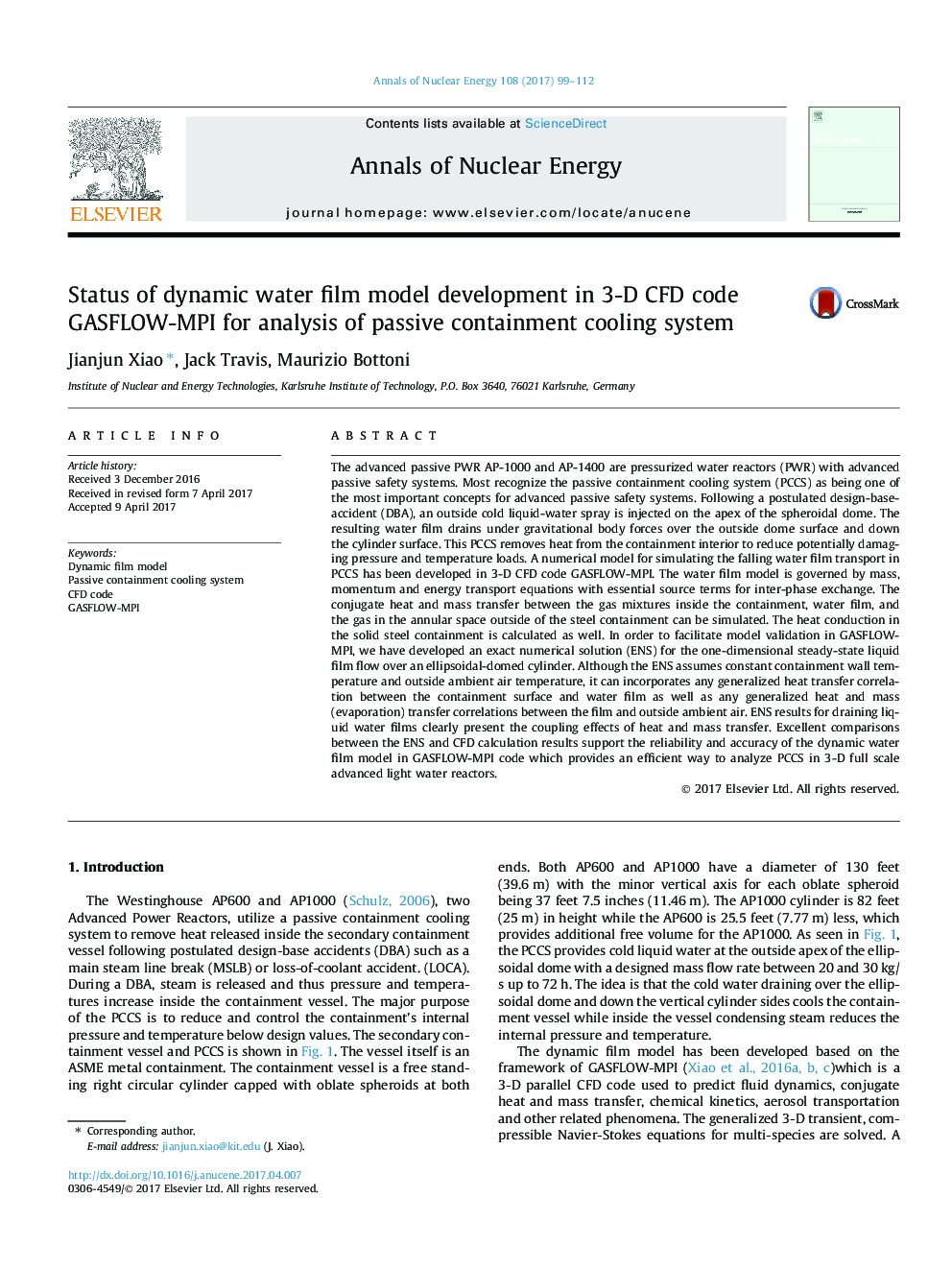| Article ID | Journal | Published Year | Pages | File Type |
|---|---|---|---|---|
| 5475143 | Annals of Nuclear Energy | 2017 | 14 Pages |
Abstract
The advanced passive PWR AP-1000 and AP-1400 are pressurized water reactors (PWR) with advanced passive safety systems. Most recognize the passive containment cooling system (PCCS) as being one of the most important concepts for advanced passive safety systems. Following a postulated design-base-accident (DBA), an outside cold liquid-water spray is injected on the apex of the spheroidal dome. The resulting water film drains under gravitational body forces over the outside dome surface and down the cylinder surface. This PCCS removes heat from the containment interior to reduce potentially damaging pressure and temperature loads. A numerical model for simulating the falling water film transport in PCCS has been developed in 3-D CFD code GASFLOW-MPI. The water film model is governed by mass, momentum and energy transport equations with essential source terms for inter-phase exchange. The conjugate heat and mass transfer between the gas mixtures inside the containment, water film, and the gas in the annular space outside of the steel containment can be simulated. The heat conduction in the solid steel containment is calculated as well. In order to facilitate model validation in GASFLOW-MPI, we have developed an exact numerical solution (ENS) for the one-dimensional steady-state liquid film flow over an ellipsoidal-domed cylinder. Although the ENS assumes constant containment wall temperature and outside ambient air temperature, it can incorporates any generalized heat transfer correlation between the containment surface and water film as well as any generalized heat and mass (evaporation) transfer correlations between the film and outside ambient air. ENS results for draining liquid water films clearly present the coupling effects of heat and mass transfer. Excellent comparisons between the ENS and CFD calculation results support the reliability and accuracy of the dynamic water film model in GASFLOW-MPI code which provides an efficient way to analyze PCCS in 3-D full scale advanced light water reactors.
Related Topics
Physical Sciences and Engineering
Energy
Energy Engineering and Power Technology
Authors
Jianjun Xiao, Jack Travis, Maurizio Bottoni,
